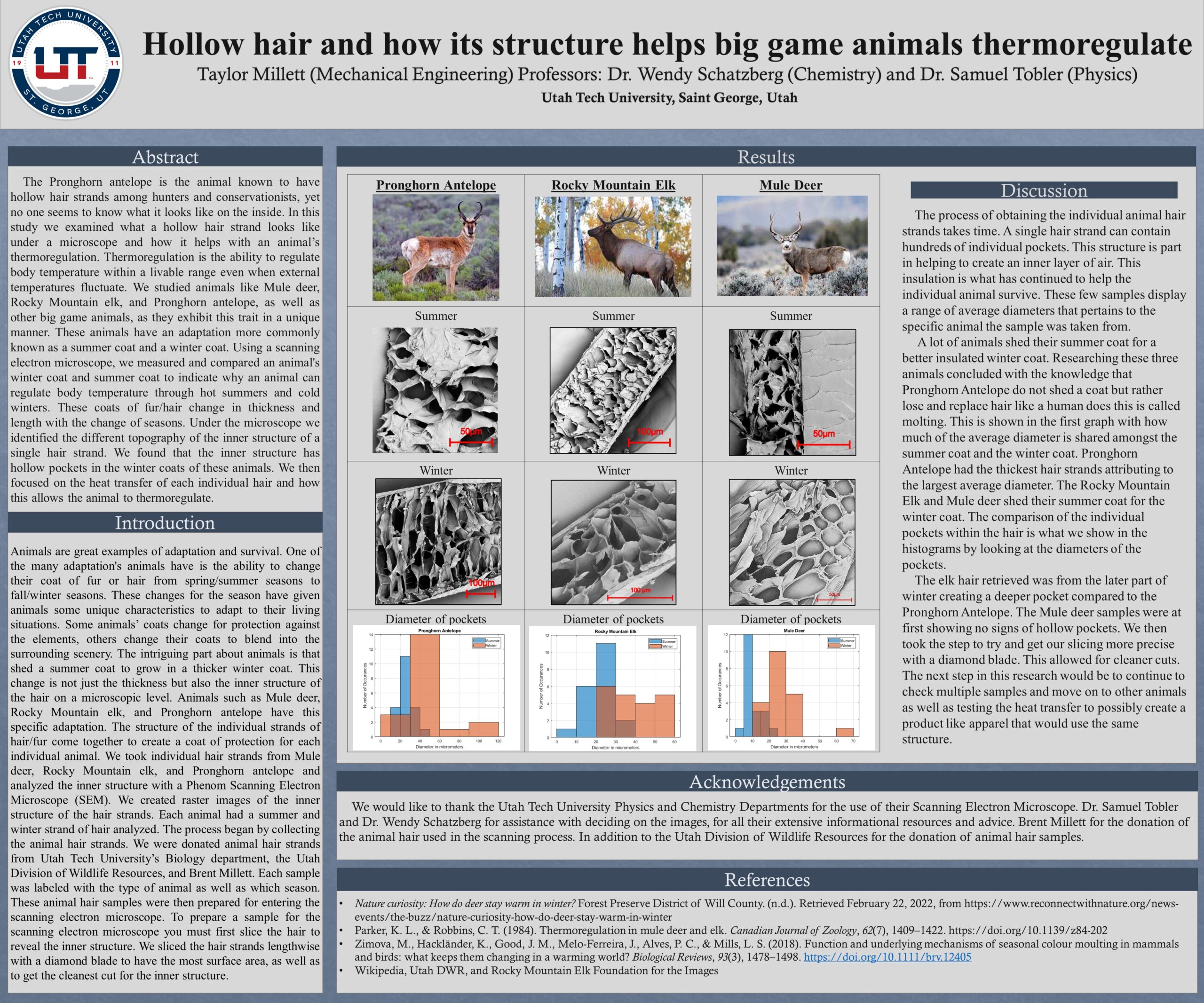Presenter Name: Taylor Millett
Description
The Pronghorn antelope is an animal known to have hollow hair strands among hunters and conservationists yet no one seems to know what it actually looks like on the inside. In this study, we examined what a hollow hair strand looks like under a microscope and how it helps with an animal's thermoregulation. Thermoregulation is the ability to regulate body temperature within a livable range even when external temperatures fluctuate. We studied animals like Mule deer, Rocky Mountain elk, and Pronghorn antelope, as well as other big game animals, as they exhibit this trait in a unique manner. These animals have an adaptation more commonly known as a summer coat and a winter coat. Using a scanning electron microscope, we measured and compared an animal's winter coat and summer coat to indicate why an animal can regulate body temperature through hot summers and cold winters. These coats of fur/hair change in thickness and length with the change of seasons. Under the microscope, we identified the different topography of the inner structure of a single hair strand. We found that the inner structure has hollow pockets in the winter coats of these animals. We then focused on the heat transfer of each individual hair and how this allows the animal to thermoregulate.
University / Institution: Utah Tech University
Type: Poster
Format: In Person
Presentation #D59
SESSION D (3:30-5:00PM)
Area of Research: Science & Technology
Email: taylor.millett@utahtech.edu
Faculty Mentor: Samuel Tobler

